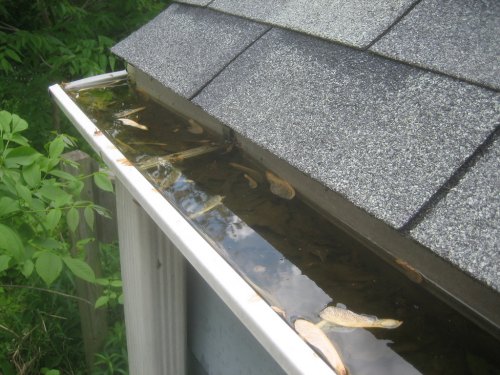
Gutters form an integral part of every roof structure, diverting rain and other precipitation away from the side of the building and into the drainage system, simultaneously protecting the foundations while also helping to reduce erosion and leaks to subsurface cellars and basements. It is therefore crucial that guttering is kept in good health to reduce blockage and malfunction, which may endanger its structural integrity.
Due to their simple and effective open half-pipe design feeding into a vertical downpipe, gutters can easily become blocked with falling leaves or moss, causing overflow if it rains. This in turn can lead to damage to mortar and exterior brickwork, even seeping through to interior paintwork and wall furnishings. The problem escalates if windblown seeds begin to take root in the mass of decomposing leaves and standing water, causing a weed infestation that further damages guttering systems.
Properly maintaining your gutters should include an annual clear out of the pipework, and this can be as simple as climbing a ladder, assessing the situation, and getting your hands dirty with a trowel or similar. Ideally, this should be carried out at the start of winter, following the autumn period in which most leaves will fall into your guttering.
Difficulties only really occur if the blockage is in your downpipe, which will require drainage rods to attack the obstruction from above. It is highly advisable to install some variety of gutter guard or comparable device that works as a filter, stopping leaves and debris from falling into your downpipe and causing trouble. This could be as straightforward as fitting a length of chicken wire around the area at the mouth of the pipe, although this will need cleaning more regularly than the rest of your guttering to allow water to flow freely.
Considerations should also be made concerning the material makeup of your gutter. The older your building, the more likely it is that you will have a cast iron system. These gutters require occasional weatherproofing with special paint to avoid corrosion, which in turn could lead to cracks and faults in the structure.
Modern gutters are generally uPVC-based however, making them cheaper, lighter and less susceptible to deterioration.
Ashley writes for Morgan Asphalte, London based roofers working throughout the city for over 40 years.




